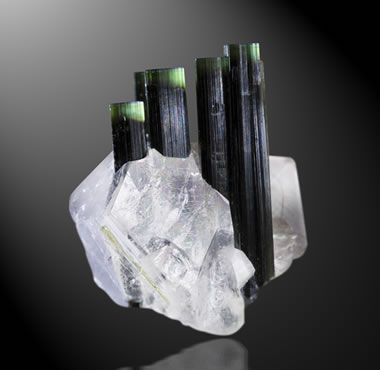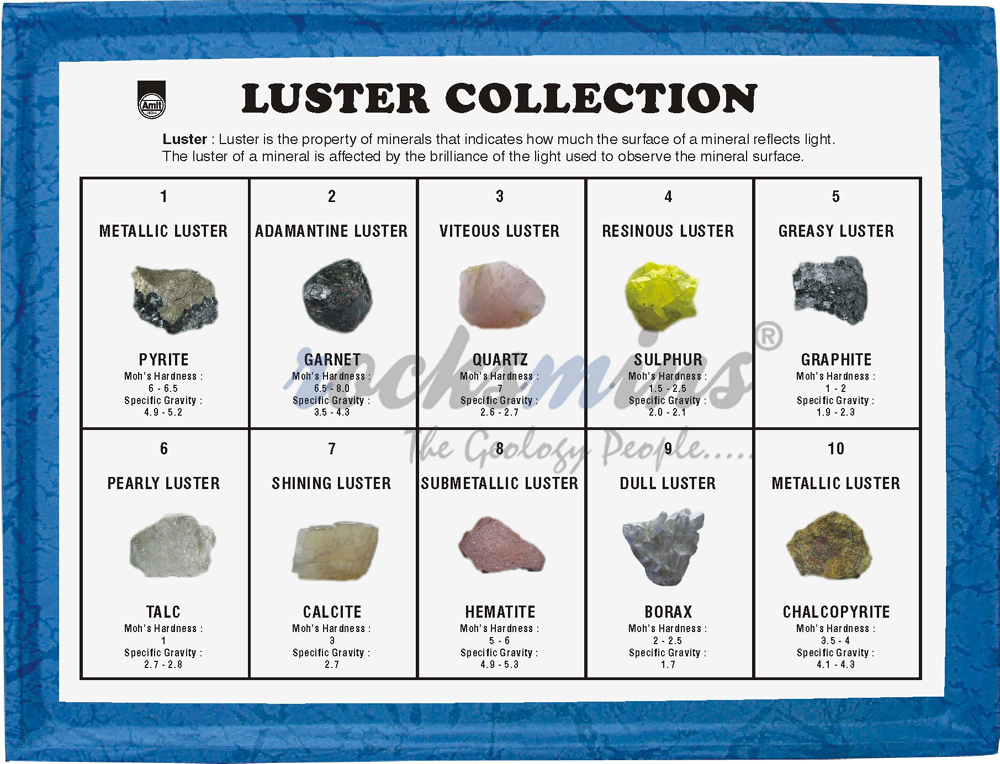Discuss How Luster Is Used to Describe Minerals
Luster is also related to atomic structure and bonding within the mineral itself. Distinguish gems from ordinary minerals and describe how toproduce the shiny facets of gems.
Using Characteristics of Minerals to Identify Them Hardness.

. Some of them are fairly common while others are only found in a few common minerals. Which items are TRUE about minerals. Metallic lusters tend to correspond with ionic bonds and nonmetallic lusters with covalent bonds.
Again I encourage you to develop a systematic approach to identifying minerals. Think about a piece of dirt. Which of these terms can describe a minerals luster.
The general appearance of the surface. There are two main kinds of luster. Appears to have the luster of a diamond.
Select all that apply. When looking for an earthy luster picture substances such. Metallic shiny and nonmetallic dull.
Exploring the Luster of Minerals. Appears as a piece of polished glass. See spelling differences is the way light interacts with the surface of a crystal rock or mineralA range of terms are used to describe lustre such as earthy metallic greasy and silky.
Students observe discuss and describe the luster of minerals when they are placed under bright light. Hardness 2½ 3. This is a brilliant luster shown by some minerals that also have a high refractive index and as such refract light strongly.
3E4A1 Analyze and interpret data from observations and measurements to describe and compare different Earth materials including rocks minerals and soil and classify each type of material based on its distinct properties. Metallic minerals exhibit lustre in their appearance and consist of metals in their chemical composition. Having a glassy appearance.
Minerals are divided into two types namely metallic and non-metallic. Mohs Hardness Scale is used to compare the hardness of minerals. Another common mineral is quartz or silicon dioxide.
Solution for discuss the tools that can be used to study rocks. Students record the results of the luster test on their mineral profile sheets. The terms metallic and nonmetallic describe the basic types of luster.
The ability to resist being scratchedor hardnessis one of the most useful properties for identifying. Start your trial now. Similar to oil on water.
Appears as a piece of resin. Luster - Metallic or Submetallic. However most minerals have a nonmetallic luster such as glassy earthy pearly silky or even greasyThe ability of a mineral to transmit light is another useful property used in identification of minerals.
Luster describes how a mineral appears to reflects light and how brilliant or dull the mineral is. Luster is determined by the way light is reflected from a rock or mineral. Terms Used to Describe Luster of Nonmetallic Minerals.
Having the appearance of resin. Luster is appearance or quality of light reflected from the surface of the mineral. Reflecting light to give a play of colors.
Students summarize the information they have recorded on each mineral and. Most minerals can be identified by examining the physical properties described below. Luster describes how glossy or shiny the surface is.
Vitreous also known as glassy Adamantine also known as brilliant or diamondlike Resinous also known as resinlike Silky. Luster is how a mineral reflects light. Some minerals have metallic or submetallic luster.
Its crystals have a specific hexagonal shape. The word mineral mean. Its ordered structure is apparent because it occurs in crystals shaped like small cubes.
Select three correct answers. Calcite has three cleavage directions but not at 90 degrees so the mineral has a rhombic shape. Halite also has a salty taste while calcite doesnt.
Select all that apply. First week only 499. The color and luster describe the appearance of a mineral and streak describes the color of the powdered mineral.
Minerals are classified based on their crystal form and chemistry. Galena and graphite are both gray to black in color but galena has a metallic luster while graphites luster is dull thus the minerals have different appearances. These minerals serve as a potential source of metal and can be extracted through mining.
Lesson Summary You can identify a mineral by its appearance and other properties. Lustre British English or luster American English. Having surfaces appearing to be composed of fine fibers.
3-32 Identify common minerals on the basis of their properties by using a minerals identification key. A dull B waxy C brilliant D resinous - 2213092 dakotahope615 dakotahope615 11142016 Physics High School answered Which of these terms can describe a minerals luster. Coal is a mineral composed entirely of carbon originally trapped by living organisms.
Click here to get an answer to your question All of the following words can describe a minerals luster except Ametallic Bbrittle Cpearly Dglassy ineedhelpbro97 ineedhelpbro97 10152020 Geography High School answered All of the following words can describe a minerals luster except Ametallic. The term used to describe how light is reflected from a minerals surface is A. Students sort their minerals according to similarities and differences in luster.
Pearly also known as mother-of-pearl. Table salt is a mineral called sodium chloride. Luster is a description of how much a mineral reflects light.
In the remarks column are listed other useful diagnostic property for each mineral. The terms used to describe luster are. It is made up of very tiny grains and it is dull not shiny.
Each mineral has a characteristic density. Which of the following is a quantitative property of minerals. The word mineral is used with many meanings based on the particular substance.
Metallic also known as splendent Submetallic.



0 Response to "Discuss How Luster Is Used to Describe Minerals"
Post a Comment